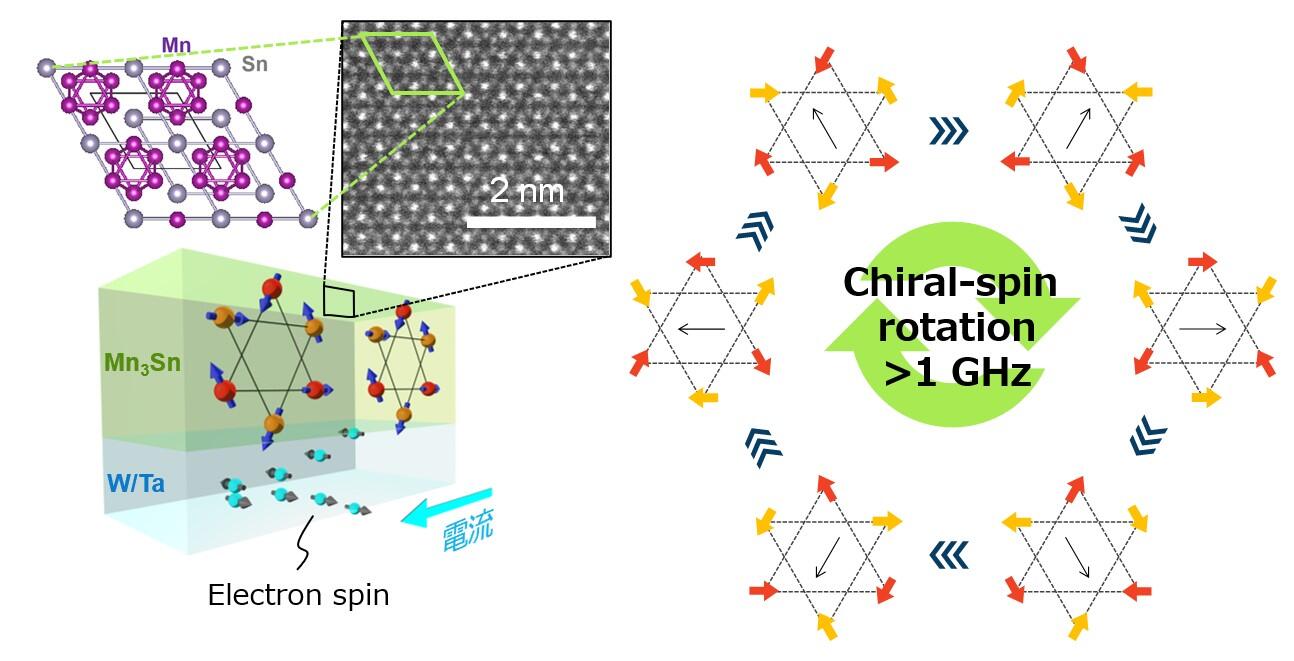The research group led by Yutaro Takeuchi, a specially appointed Assistant Professor, Advanced Institute for Materials Research, Tohoku University; Yuta Yamane, Assistant Professor, Frontier Research Institute for Interdisciplinary Sciences, Tohoku University; Professor Shunsuke Fukami, Research Institute of Electrical Communication, Tohoku University; Hideo Ohno, President, Tohoku University; and Jun'ichi Ieda, Chief Researcher of the Japan Atomic Energy Agency investigated the phenomenon that occurs when electron spins are applied to the antiferromagnet Mn3Sn, a "silent magnet" that exhibits strong magnetism, and discovered a new spintronic phenomenon in that the internal chiral spin structure rotates constantly in a magnetic field. The research group has been conducting research on the electrical control of various magnetic materials, particularly ferromagnets, with the aim of applying them to innovative information devices. In this context, they focused on non-colinear antiferromagnets, about which new and interesting physical properties have been reported.
According to Professor Fukami, "We began our research by asking how non-colinear antiferromagnets can be electrically controlled." Using their proprietary high-quality thin film formation technology, the group fabricated a structure wherein Mn3Sn (manganese-tin alloy), a typical non-collinear antiferromagnetic material, is deposited on the laminated base film of W (tungsten) and Ta (tantalum). A structure capped with Pt (platinum) was then prepared, and the phenomenon induced in the chiral spin structure of Mn3Sn upon introduction of a current in the in-plane direction was investigated.

Left: Cross-sectional electron microscope image of the sample used
Credit: Tohoku University
Professor Fukami says, "We believe that this spintronic phenomenon will lead to various new applications such as ultra-high-speed, high-density memory elements and oscillators, and we would like to take on the challenge of demonstrating these applications."
■Non-collinear antiferromagnetic material: An antiferromagnetic material characterized by the non-collinear arrangement of magnetic moments in a stable state. It has become clear that the anomalous Hall effect and magneto-optical effect, which were thought to occur only in ferromagnets with finite magnetization, appear despite possessing no net magnetization, and their physical properties have been extensively investigated in recent years.
This article has been translated by JST with permission from The Science News Ltd.(https://sci-news.co.jp/). Unauthorized reproduction of the article and photographs is prohibited.




